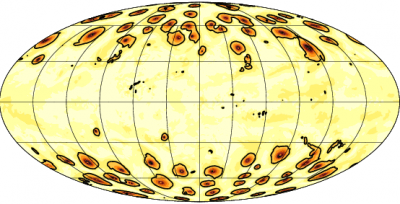Using Central Pressure Deficit to Predict Hurricane Damage
A theory for the relationship between central pressure and peak wind speed is provided and tested across a hierarchy of global model simulations and observations.
This research improves our fundamental understanding of hurricanes and their risks. This suggests that storm central pressure deficit, an intensity measure that combines maximum wind speed, storm size, and background rotation rate, is a better predictor for hurricane damage.
Two common measures of tropical cyclone intensity are the central pressure deficit and the peak near-surface wind speed. The relationship between these two metrics has been a long-standing challenge in atmospheric science, but this work provides a theoretical grounding for this relationship. It is demonstrated that the central pressure is highly predictable from the wind field via gradient wind balance. This theory is found to hold across a hierarchy of global model simulations (i.e., spanning reduced-complexity and Earth-like global simulations) and observations. It is concluded that central pressure deficit is an intensity measure that combines maximum low-level wind speed, storm size, and the Coriolis parameter.

